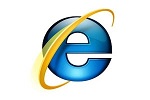Over the weekend I saw an Internet Explorer 9 commercial. It caught my attention mostly because of the surprise I experienced. It has been clear for some time to me that Microsoft has given up on dominating the browser market.
 In 2003 Microsoft OWNED the browser market. They had driven Netscape into the ground and had, according to www.w3schools.com, close to 90% of the browser market. But that year a forerunner of Firefox, Mozilla began. And they began to get users.
In 2003 Microsoft OWNED the browser market. They had driven Netscape into the ground and had, according to www.w3schools.com, close to 90% of the browser market. But that year a forerunner of Firefox, Mozilla began. And they began to get users.
By the end of 2005 Firefox has nabbed nearly a quarter of the browser market and IE had fallen below 70%, never to return. By the end of 2008 Firefox had more than 44% of the browser market, IE had fallen to 46% and an upstart, Google Chrome had appeared on the scene.
 Fast forward to the spring of 2011 and an amazing thing happened. Chrome zoomed past IE, grabbing 25.6% of the market to IE’s steadily dwindling 24.3%. And shortly after that Chrome began biting into Firefox’s dominance to the point where, as of the end of August 2012, Chrome has 43.7%, Firefox 32.8% and IE a measly 16.2%.
Fast forward to the spring of 2011 and an amazing thing happened. Chrome zoomed past IE, grabbing 25.6% of the market to IE’s steadily dwindling 24.3%. And shortly after that Chrome began biting into Firefox’s dominance to the point where, as of the end of August 2012, Chrome has 43.7%, Firefox 32.8% and IE a measly 16.2%.
Which brings me back to the commercial I saw. Why, I wonder, is Microsoft investing in advertising a browser that is shrinking in its share of the market? I was on an “off” channel not one of the main networks’ main channels. If you’ve given up the market already, why would you invest in advertising?
While I may never know Microsoft’s reasoning, I can draw the following conclusions for how not to grow my business:
- If I want to get or keep market share, work it at the top of your market. It is easier to stay on top than it is to claw my way back to the top.
- If I want to advertise on traditional media, advertise something that is growing / coming. For Microsoft that could be the Windows Phone or Windows 8 – a piece of the market that is ripe for conquering.
- Be clear on what you need to accomplish with your marketing dollars. It is good to find your niche and then advertise intentionally in that market. It is not good to find the portion of your market that you’re losing and not likely to regain and to market there.
But the positive take away from Microsoft continuing to advertise IE 9 is to never give up. I speak with a lot of competitors that give up after a couple of tries at something. I have found that some of our best clients come through persistence – especially in following up with someone who has expressed interest but hasn’t responded yet. More often than not that persistence is met with “Thank you for not giving up. I was so busy I didn’t respond but now I’m finally getting caught up.”

